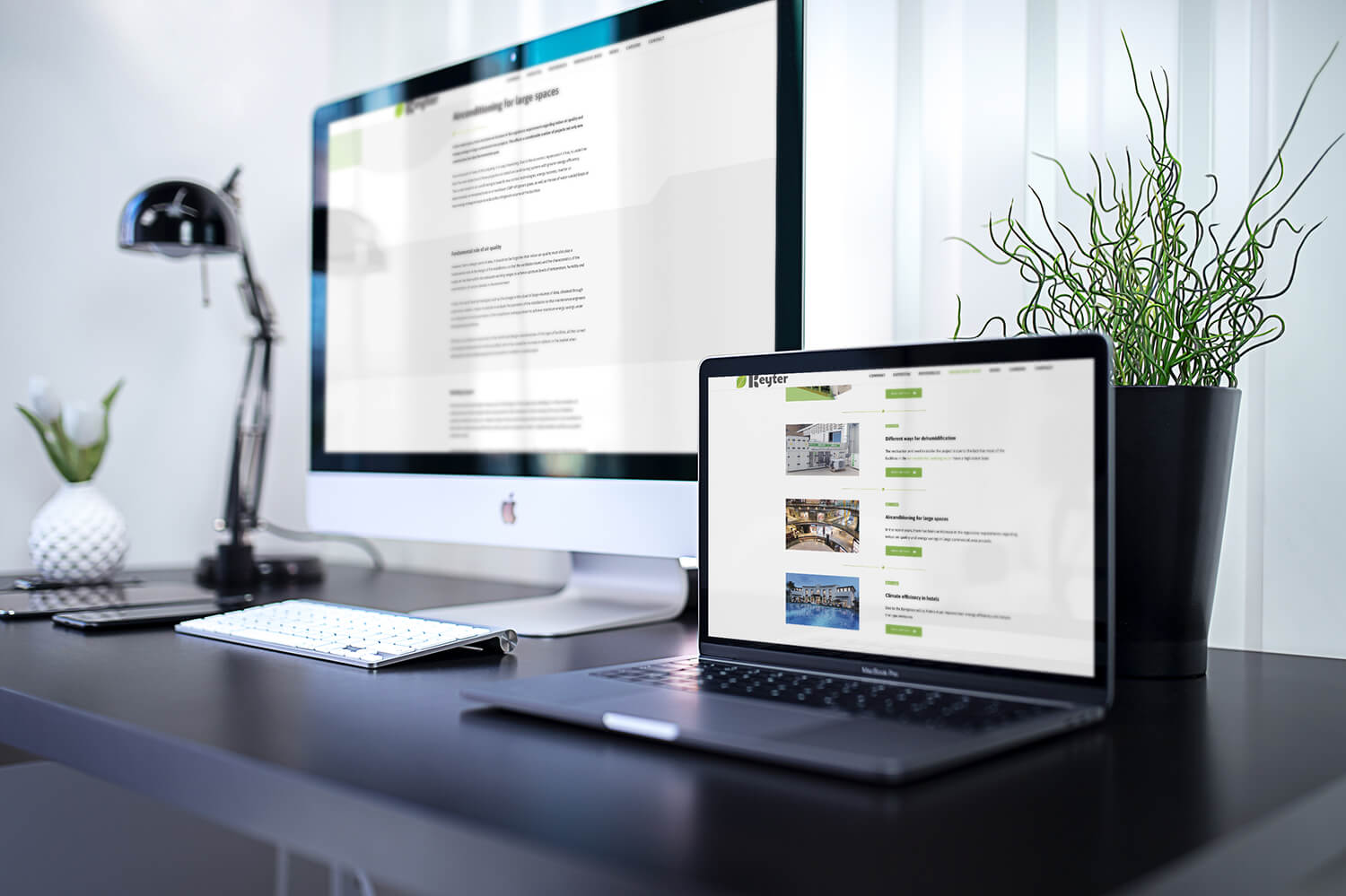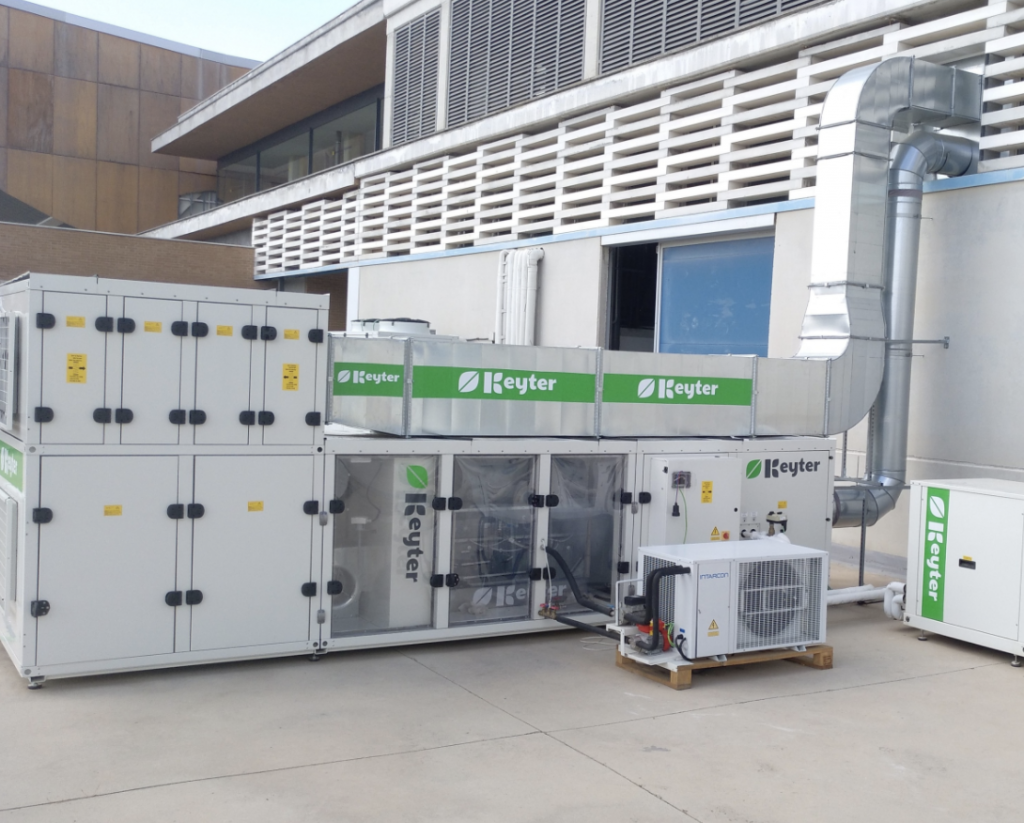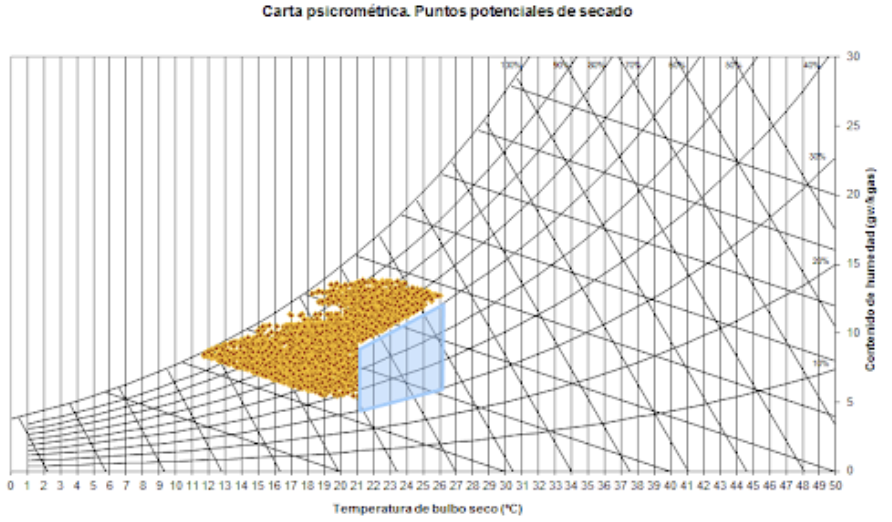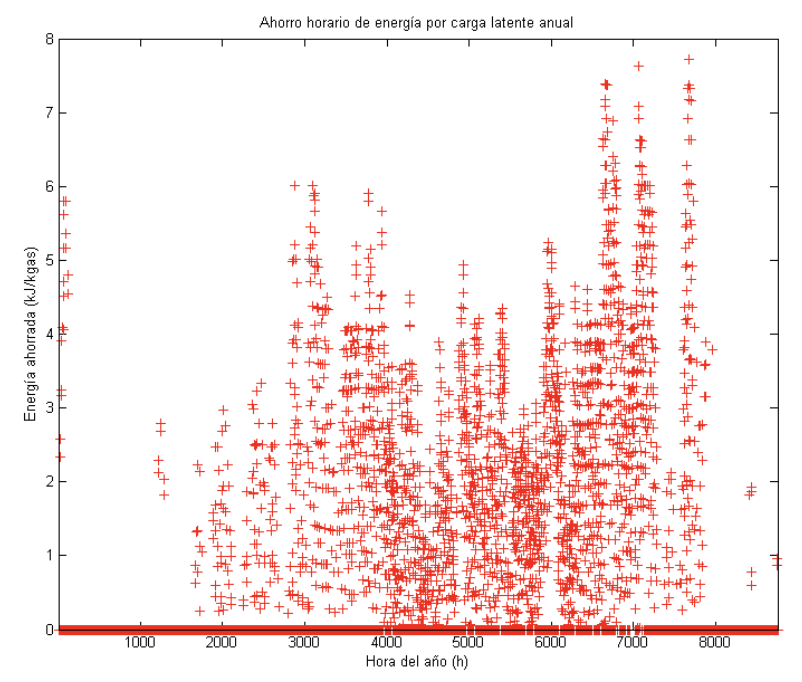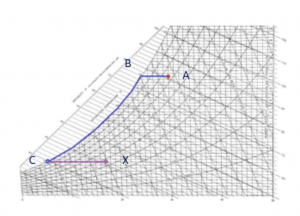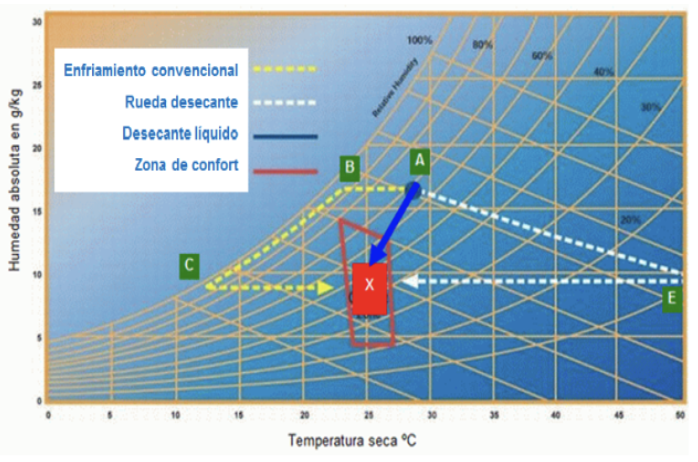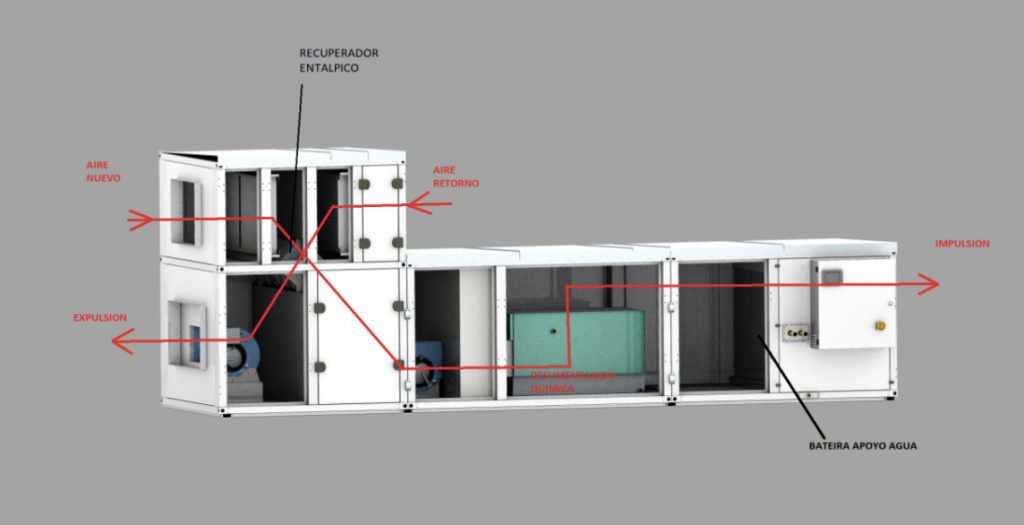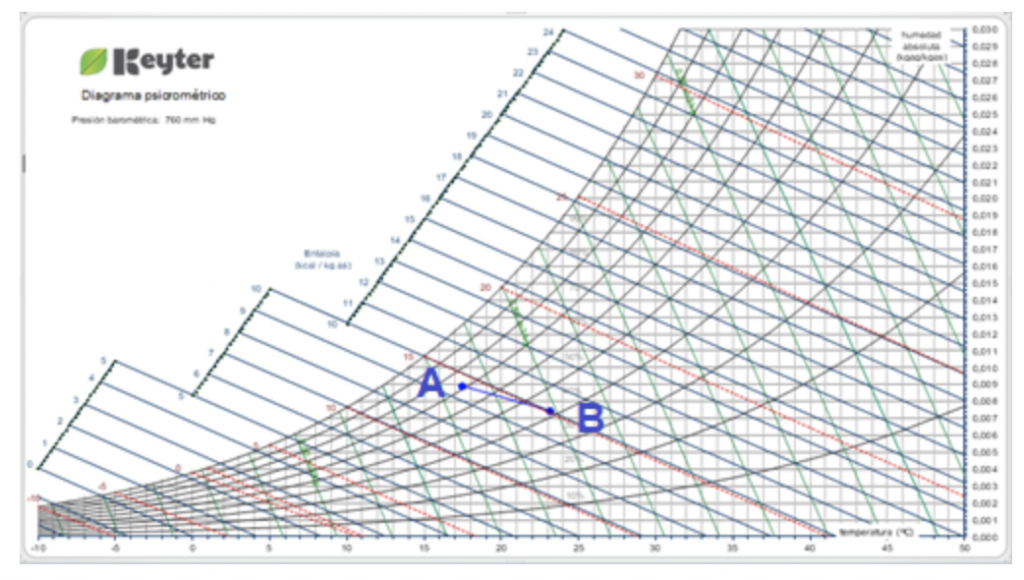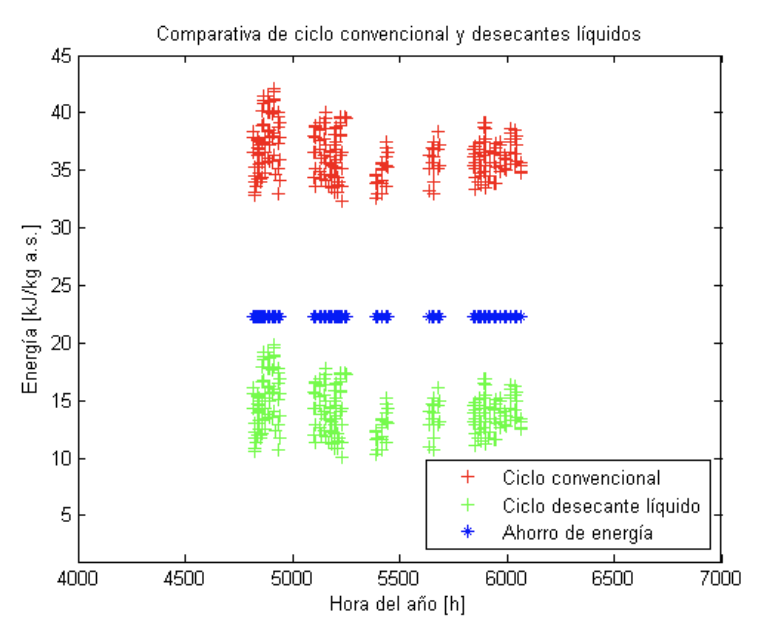The motivation and need to tackle the project is due to the fact that most of the facilities in the non-residential building sector have a high latent load.
To illustrate with some indicative figures, for an office building located in Málaga, with a useful area of 100 m2, an occupancy of 10 people for 10 hours a day and some enclosures in accordance with the provisions of the technical building code, the latent load represents 21.38% of the building’s total thermal load for a relative humidity setpoint of 50%.

